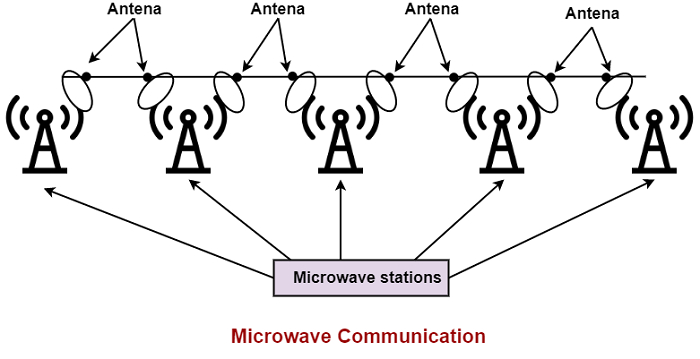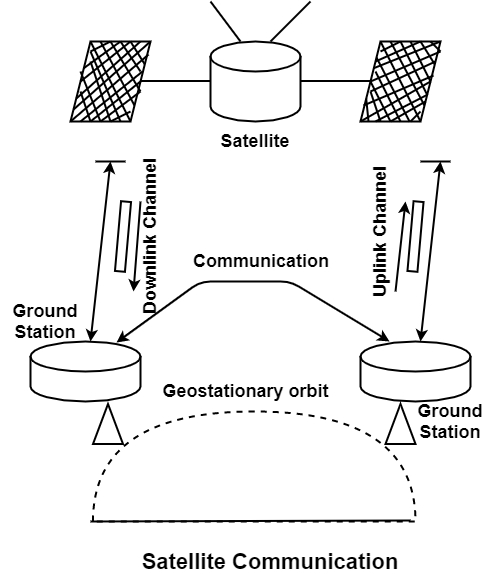
 Data Structure
Data Structure Networking
Networking RDBMS
RDBMS Operating System
Operating System Java
Java MS Excel
MS Excel iOS
iOS HTML
HTML CSS
CSS Android
Android Python
Python C Programming
C Programming C++
C++ C#
C# MongoDB
MongoDB MySQL
MySQL Javascript
Javascript PHP
PHP
- Selected Reading
- UPSC IAS Exams Notes
- Developer's Best Practices
- Questions and Answers
- Effective Resume Writing
- HR Interview Questions
- Computer Glossary
- Who is Who
Explain the types of Microwave Transmission?
It makes use of the lower gigahertz frequencies of the electromagnetic spectrum. These frequencies are higher than radio frequencies, and they make better throughput and execution. This transmission can be further classified as Terrestrial or Satellite.
Types of Microwave Transmission
There are two types of microwave transmission, which are as follows.

Terrestrial Microwave Transmission
These systems use directional parabolic antennas to transmit and receive signals in the lower gigahertz range, as shown in the figure. These signals are highly focussed and travel insight. Relay towers can extend signals. Smaller terrestrial microwaves systems can be used inside a building. Some microwave LANS works at low power using small transmitters that communicate with Omni-directional Hub.

Characteristics of Terrestrial Microwave Systems
There are the following characteristics of Terrestrial Microwave Systems, which are as follows.
- The frequency range used in from 4-6 GHz and 21 to 23 GHz.
- It provides bandwidth from 1 to 10 Mbps.
- The signals are affected by the EMI effect, jamming and eavesdropping,
- Line of sight requirements makes installation difficult.
- Short-distance systems can be inexpensive, but long-distance systems are relatively expensive.
Satellite Microwave Communication
Satellite transmission is much like line-of-sight microwave transmission in which one of the stations is a satellite orbiting the earth. The principle is similar to terrestrial microwave, with a satellite acting as a super tall antenna and repeater. Although satellite transmission signals must still travel in straight lines, the limitations imposed on distance by the earth’s curvature are reduced. In this way, satellite relays allow microwave signals to span continents and oceans with a single bounce.

Advantages of Satellite Microwave Communication
- Satellite is a single microwave relay station visible from any point of a vast area.
- The transmission and reception costs are independent of the distance between two points.
- A transmission station can retrieve its transmission & check whether the satellite has transmitted the information correctly.
Disadvantages of Satellite Microwave Communication
- It is a very high cost of placing the satellite into its orbit.
- Since the waves are transmitted by satellites all around the world. Therefore, the security of the message is fragile.
- Satellite use microwaves which are vulnerable to electromagnetic interferences.

